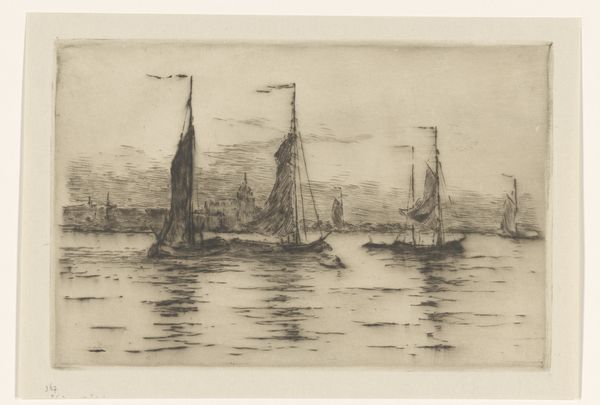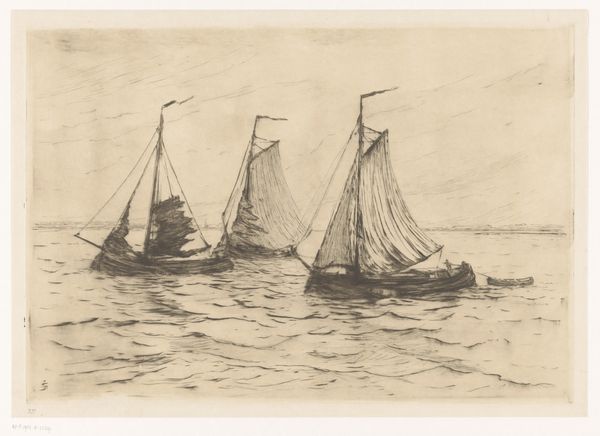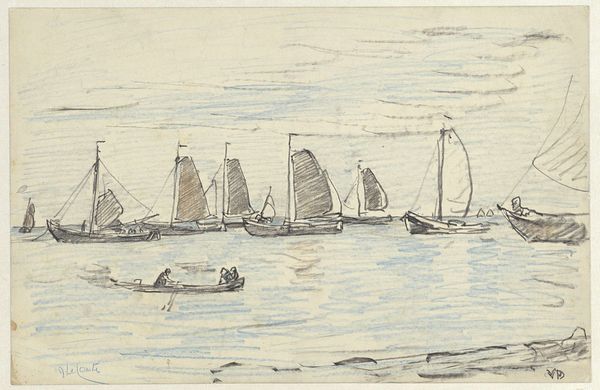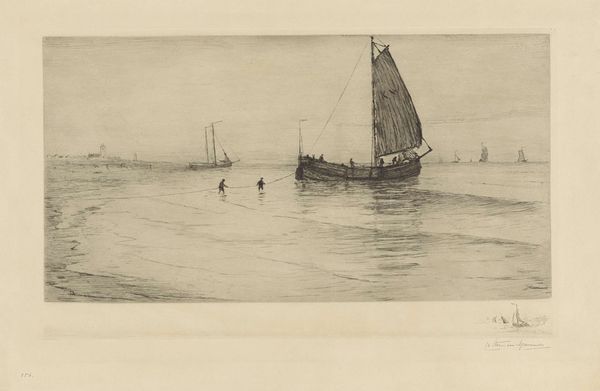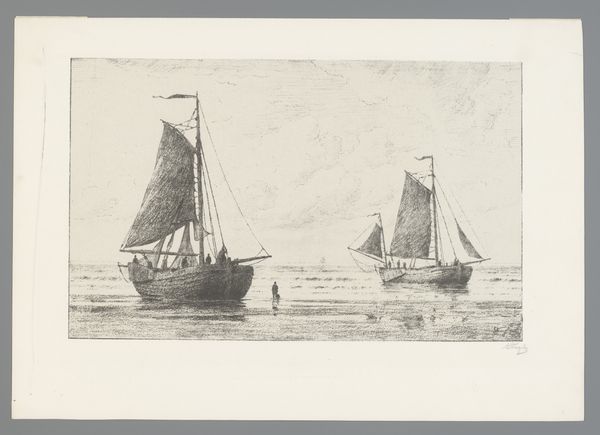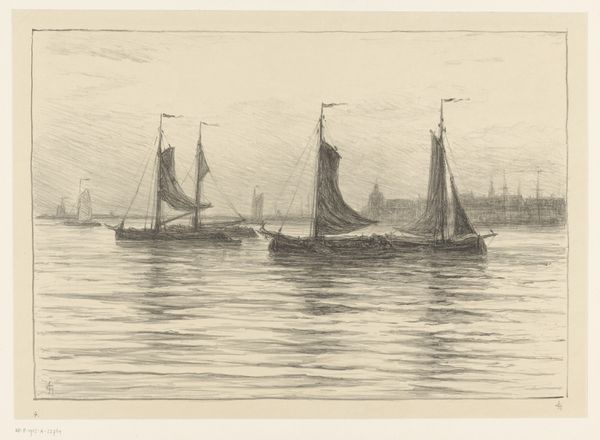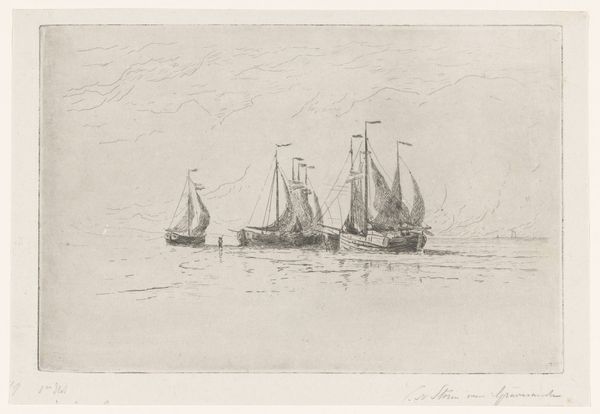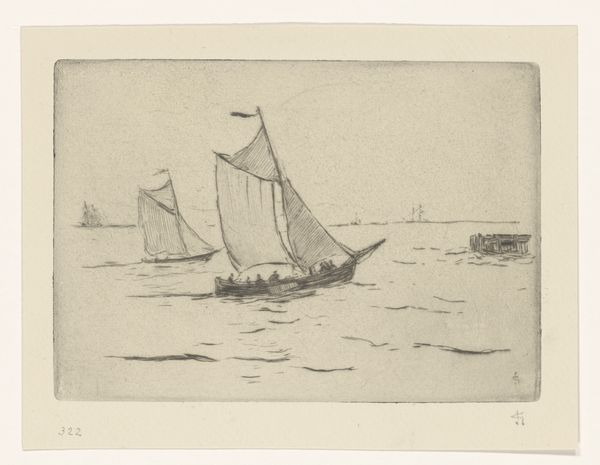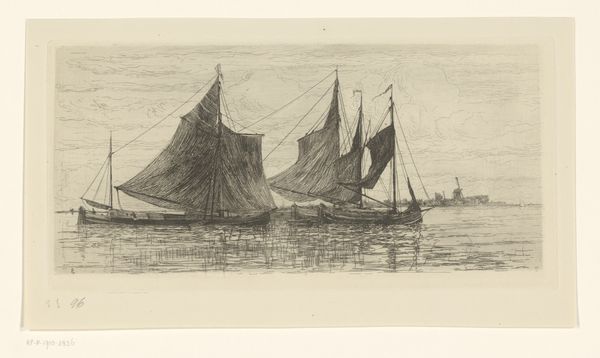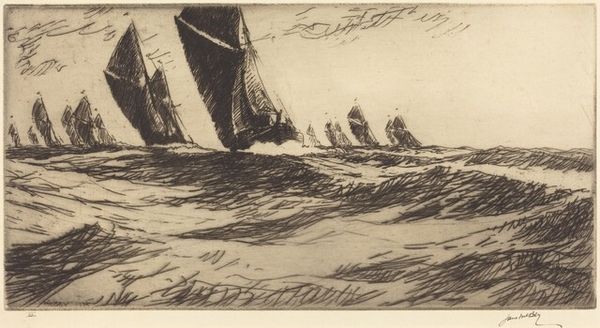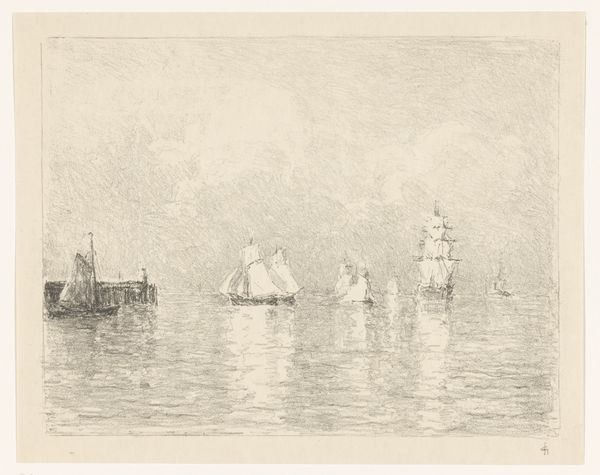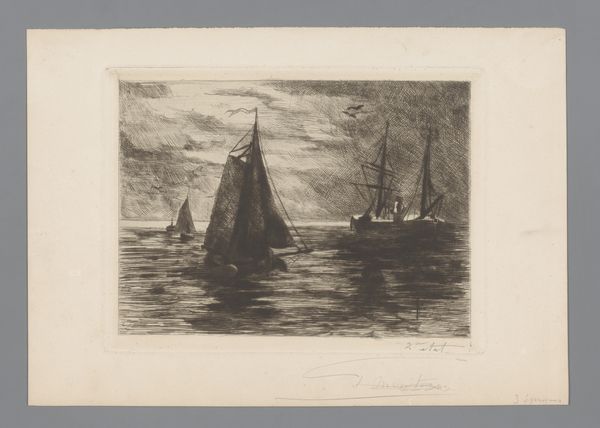
print, etching
# print
#
etching
#
landscape
#
pencil drawing
#
19th century
#
realism
Dimensions: height 298 mm, width 498 mm
Copyright: Rijks Museum: Open Domain
Editor: Here we have Carel Nicolaas Storm van 's-Gravesande's "Schepen op de Maas," a print, an etching, made sometime between 1869 and 1902. The atmospheric perspective, that soft focus, makes the watercraft appear almost ghostly. What social context can you bring to this evocative scene? Curator: This etching encapsulates a pivotal era. Ports, such as the one depicted here on the Maas, were integral to the Netherlands’ burgeoning global trade in the late 19th century. But the depiction isn't simply documentary, it idealizes the industrial reality. Note the lack of smoke or other pollution normally associated with bustling harbors of this time. Editor: So, the artist chose what to include and, equally, what to leave out, to make some kind of point. Curator: Precisely. This deliberate romanticizing of maritime activity allowed for popular consumption and fits with the contemporary Dutch fascination with their seafaring past. Van 's-Gravesande avoids direct political or social commentary. Consider also the rise of printmaking at this time: it allowed art to become more democratized, accessible to a wider public audience, shifting the role of art in society. How do you feel about this subtle visual marketing? Editor: It makes me a little uneasy, to be honest. It feels like historical whitewashing, even if done unconsciously. Curator: And that feeling is completely valid! Our modern perspective allows us to dissect the intentions and impact of these images, seeing them not just as pretty pictures, but as coded messages reflecting a specific moment in history and shaping public perception. Has looking through that social lens shifted your perception of the work? Editor: Absolutely. I now see the print not as a straightforward depiction but as a complex statement about Dutch identity and industrial progress in the late 19th century. Curator: Exactly. That's the power of contextual analysis: it reveals the narratives embedded within the artwork and allows us to engage with it on a deeper level.
Comments
No comments
Be the first to comment and join the conversation on the ultimate creative platform.
